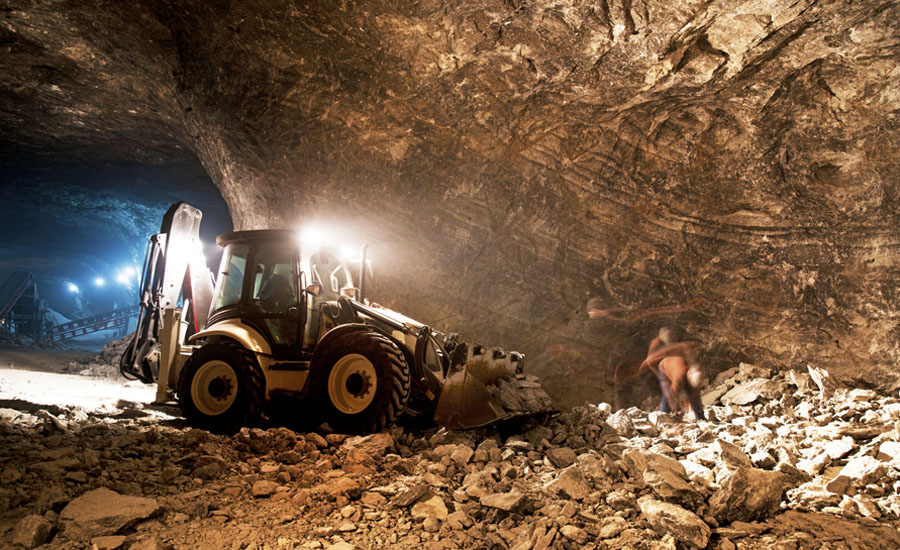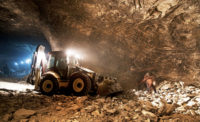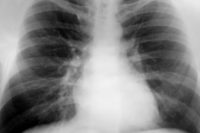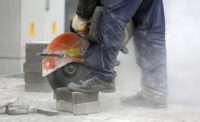One year ago this month, the landmark respirable dust rule went into effect, adding a number of increased protections for coal miners and closing several loopholes that masked their exposure to unhealthy coal mine dust.
The respirable dust rule is the culmination of the Department of Labor’s End Black Lung – Act Now Campaign, which began in late 2009 and called renewed attention to a disease that has caused or contributed to the deaths of 76,000 coal miners since 1968.
Nearly 62,000 dust samples were collected from surface and underground coal mines by the Mine Safety and Health Administration and coal mine operators, and only 1.1 percent of these samples exceeded the dust concentration limit. MSHA alone collected nearly 30,000 samples at 330 underground and approximately 900 surface mines and facilities.
A historic low
The results for the first full year of sampling under the new rule show that the yearly average concentration of respirable dust for the dustiest mining occupations dropped to a new and historic low of 0.65 milligrams per cubic meter of air (mg/m3).
“While some insisted that mines would be unable to comply with the requirements of the rule, sampling results have proved that assumption is incorrect,” said Joseph A. Main, assistant secretary of labor for mine safety and health. “At long last, we have a rule that fulfills the intent of Congress when it passed the Federal Coal Mine Health and Safety Act of 1969 – to eradicate black lung once and for all.”
The first phase
Under Phase I of the rule, compliance can be determined based on a single, full shift sample of coal dust, rather than simply on an average of multiple samples, which left some miners exposed to dust levels higher than the standard. Mine operators must sample the dust in the air for all shifts during the sampling cycle, and the sample must be taken when the mines are operating at least 80 percent of normal production so that they are representative of miners’ actual working conditions. In addition, mine operators must take immediate action when any dust sample exceeds the concentration limit and must make a more thorough examination of dust controls on each shift, with a record made of the examination and signed by a top mine official.
Phase I also provides MSHA with increased enforcement authority to issue a citation during MSHA sampling for any single, full-shift sample at or exceeding the citation level. It increases certification and de-certification requirements for mining personnel who conduct sampling, increases medical surveillance requirements for both surface and underground mine and expands sampling for dust at surface mining operations.
The next stage
“Now that Phase 1 of the rule is in place, we are moving to the next stage,” Main said.
In preparation for Phase II, MSHA is hosting a series of stakeholder outreach meetings so that mine operators have ample time to adjust to the new requirements.
Beginning Feb. 1, 2016, continuous personal dust monitors, or CPDMs, must be used to monitor underground coal mine occupations exposed to the highest respirable dust concentrations, as well as all miners with evidence of black lung. These new, state-of-the-art devices provide miners and mine operators with dust exposure results in real time during the miner’s shift, unlike the current device that requires that dust collected on a cassette be sent to labs for analysis, a process that can take days or weeks for results.
The rule’s increased sampling frequency provisions also will go into effect at this time. For high-exposure occupations, 15 valid samples must be obtained on consecutive shifts every quarter, instead of the five samples previously collected either on consecutive days or on consecutive shifts every two months.
CPDM sampling
Finally, operators must post results of CPDM sampling within 12 hours of the sampled shift, and miners with evidence of black lung must be given a copy of the sample data within the first hour of the miner’s next work shift.
“The use of the new, cutting-edge CPDMs provides for real-time dust level readings and allows corrective actions to take place more quickly. This, along with increased sampling frequency and the protections already in place, will help rid the coal mining industry of this terrible disease and protect our miners,” said Main.
On May 1, MSHA began certifying industry personnel to use CPDMs for compliance sampling and maintenance and calibration. To date, 906 industry personnel have been certified in CPDM sampling and 130 in CPDM maintenance and calibration.
The third and final phase of the rule will go into effect next August and will lower the dust concentration limit for the dustiest areas in the nation’s coal mines from 2.0 to 1.5 milligrams per cubic meter of air.
The dust rule was challenged by several petitioners and is under review by the 11th Circuit Court of Appeals.



